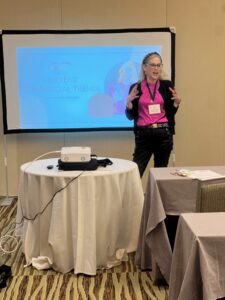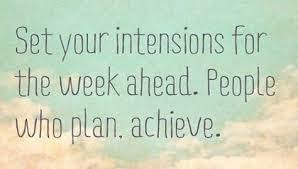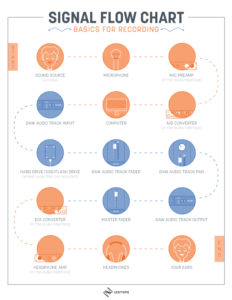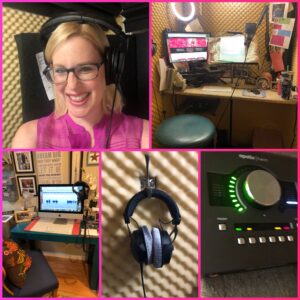Reaching Out to A Coach
 You have a burning question, that’s great! And the good news, actually the really good news, is that there are A LOT of really wonderful coaches in voice over depending on both what genre you are looking to study and what your specific learning style is. Even better, many coaches have lots of free resources to offer! Between blogs, YouTube, Instagram, Facebook, and linkedIn, you can learn so much before you even have to open your wallet. So when it is time to actually invest in yourself and your voice over career, whether it is signing up for a class or a private lesson, there are som best practices to build a good relationship with your coaches.
You have a burning question, that’s great! And the good news, actually the really good news, is that there are A LOT of really wonderful coaches in voice over depending on both what genre you are looking to study and what your specific learning style is. Even better, many coaches have lots of free resources to offer! Between blogs, YouTube, Instagram, Facebook, and linkedIn, you can learn so much before you even have to open your wallet. So when it is time to actually invest in yourself and your voice over career, whether it is signing up for a class or a private lesson, there are som best practices to build a good relationship with your coaches.
Free Consultations
Most coaches offer a 15 to 20 minute free consultation. This is meant for BOTH of you to see if you are a good fit for each other. This is the time to ask your coach how they are different from other coaches and to see what their policies are. This is NOT the time to expect free training. This is not where you pick their brain for free. This is also not the time to expect an hour from their twenty minutes. They are offering you a glimpse. Be professional and assess. Take the glimpse for exactly what it is.
Blogs
Use and enjoy blogs to enhance your knowledge base. Is it okay to reach out and introduce yourself? Of course, connect with your industry peers. Is it ok to ask a question or two to extrapolate more in-depth understanding? Sure thing. Is it okay to try to get a free session out of the coach? No. There is a line. Begging for free advice because you like their blog is both distasteful and unprofessional. It also shows a genuine lack of understanding for what we do. Each of us are on such a unique and personal journey in voice over. So, writing to a coach who you have no relationship with and asking them to venture a guess is more than useless. Just don’t. Instead, save up for a session. Invest in coaching. Dive deeper! More training is never, ever waisted! We all have to keep working on our craft!
Social Media
Connecting with coaches on Social Media is great. It is a great way to learn about them as a person, a talent, and as a coach. You get to understand who they are within the parameters they have established. Some are very responsive to DMs and to comments, others are less so. Some may be responding directly while others may have a team who does this for them. Either way, be mindful of professional boundaries. This is meant to be a professional, working relationship. Would you message your doctor or accountant at 2 Am with questions repeatedly? If the answer is no, then perhaps also do not reach out to your voice coach at that time expecting a reply. They too maintain regular business hours.
Texting
In general, coaches do not have text relationships with students. Unless a coach says the words “Please text me about….” I would assume NOT to text a voice over coach. It is appropriate in this professional relationship to email them and let them respond in a timely manner.
Business Hours
Coaches are working professionals. They typically maintain normal weekday studio hours. Some may also offer coaching on the weekend, I do not. When you are looking for the coach who is the right fit for you, respect their business hours. It is common practice that they are available when you have them booked. Some coaches have time to answer questions between sessions, others do not, but each coach is different in this regard. Regardless of their practice, no coach wants to be stalked. They are instead looking for a meaningful working relationship where they can watch their students thrive.
Takeaways
I remember well what it was like to pay for one lesson at a time. Voice over coaching is expensive, it’s an investment. You want to feel like you are getting a lot of value for your money. I am also someone who likes to feel like I am building meaningful connections with the people I work with, so when I was the talent as opposed to the coach, feeling like the coach “got me” mattered a lot. I think if you really want to connect with your coach take the time to read their coaching profile, have that consultation, and check their references. At the end of the day, you are going to have to trust your gut a bit too. Sometimes we just click with someone and sometimes we don’t. I can tell you the one way to push a coach aside and ruin things from the start is to start asking for free coaching and advice before you know each other at all. Whatever you decide to do, please do not do that!
 This weekend, on a glorious Saturday morning, I was walking my dogs around our block. I was looking at the Cherry blossoms and lilacs in bloom, and thinking about how even though I had some editing to do and a coaching lesson to plan, I had so much time that day. Time to enjoy with my husband. Time to enjoy with my kids. One of my nieces was in from Toronto and was coming to visit. Weekends are precious for working moms, because even if we still have some work to do, we can revel in the joy of the freedom that the weekend typically brings.
This weekend, on a glorious Saturday morning, I was walking my dogs around our block. I was looking at the Cherry blossoms and lilacs in bloom, and thinking about how even though I had some editing to do and a coaching lesson to plan, I had so much time that day. Time to enjoy with my husband. Time to enjoy with my kids. One of my nieces was in from Toronto and was coming to visit. Weekends are precious for working moms, because even if we still have some work to do, we can revel in the joy of the freedom that the weekend typically brings. If your goal is to build a successful, thriving business in voice over and earn a consistent, sustainable income, working long hours is the only way to do this. There is no magic bullet or secret sauce. According to Jennifer Cohen’s article in Forbes, James Cash Penny, better known as the founder of JC Penny, once said, “Unless you are willing to drench yourself in your work beyond the capacity of the average man, you are just not cut out for positions at the top.”
If your goal is to build a successful, thriving business in voice over and earn a consistent, sustainable income, working long hours is the only way to do this. There is no magic bullet or secret sauce. According to Jennifer Cohen’s article in Forbes, James Cash Penny, better known as the founder of JC Penny, once said, “Unless you are willing to drench yourself in your work beyond the capacity of the average man, you are just not cut out for positions at the top.” Every single week I schedule at least two pilates sessions. I find that in addition to keeping me fit, they help me to relax as well. Jennifer Cohen explains the connection between fitness and success in Forbes:
Every single week I schedule at least two pilates sessions. I find that in addition to keeping me fit, they help me to relax as well. Jennifer Cohen explains the connection between fitness and success in Forbes: Depending on which voice actor you ask, you’ll get a different answer to the questions “What’s the best DAW for VO?” I have used Audacity, Adobe Audition, and Twisted Wave. I may be proficient in all of them, but I LOVE Twisted Wave. To be clear this does not mean that other DAWs, from Reeper to Pro Tools don’t have immense value, but for me, I am quick and good on Twisted Wave. It serves my purposes well. And when I have a client who needs total production with music, I hire a professional engineer to mix it down anyway, so I really can do all that I need to do on Twisted Wave. Some of my favorite features are the shortcuts, multiple effects stacks, and ease of file splitting.
Depending on which voice actor you ask, you’ll get a different answer to the questions “What’s the best DAW for VO?” I have used Audacity, Adobe Audition, and Twisted Wave. I may be proficient in all of them, but I LOVE Twisted Wave. To be clear this does not mean that other DAWs, from Reeper to Pro Tools don’t have immense value, but for me, I am quick and good on Twisted Wave. It serves my purposes well. And when I have a client who needs total production with music, I hire a professional engineer to mix it down anyway, so I really can do all that I need to do on Twisted Wave. Some of my favorite features are the shortcuts, multiple effects stacks, and ease of file splitting. When I am in my booth, I turn my iPhone and Apple Watch to airplane mode. I do this because when I develop a good flow, I do not want the phone ringing to interrupt me. I do offer one word of caution: if you are doing a live session and you coincidentally cannot connect with your client, and have all your devices in airplane mode, it can be quite frustrating if they are unable to reach you. So, while you may not want your phone in the studio for a directed session, perhaps before you silence everything you should make certain that you connect.
When I am in my booth, I turn my iPhone and Apple Watch to airplane mode. I do this because when I develop a good flow, I do not want the phone ringing to interrupt me. I do offer one word of caution: if you are doing a live session and you coincidentally cannot connect with your client, and have all your devices in airplane mode, it can be quite frustrating if they are unable to reach you. So, while you may not want your phone in the studio for a directed session, perhaps before you silence everything you should make certain that you connect. Like many in voiceover, I am constantly revising my business plan, shifting my focus from commercials to explainers to elearning to targeting specific industries. As I revise my plan, my goals change. While I have a planner or agenda that I love, I find that mapping out my strategy for the week helps me to keep my mind on the big picture. As auditions and work pours in, it’s easy to get caught up in the little things and push off the tasks that we think can wait, but in doing so, in pushing off those marketing emails and that LinkedIn outreach, we are pushing off the pursuit of our longterm goals. It is so important to always have an eye on your “why.” If you lose site of that, and you are just buys submitting audition after audition, you can easily get stuck in a rut.
Like many in voiceover, I am constantly revising my business plan, shifting my focus from commercials to explainers to elearning to targeting specific industries. As I revise my plan, my goals change. While I have a planner or agenda that I love, I find that mapping out my strategy for the week helps me to keep my mind on the big picture. As auditions and work pours in, it’s easy to get caught up in the little things and push off the tasks that we think can wait, but in doing so, in pushing off those marketing emails and that LinkedIn outreach, we are pushing off the pursuit of our longterm goals. It is so important to always have an eye on your “why.” If you lose site of that, and you are just buys submitting audition after audition, you can easily get stuck in a rut.  If your fan makes noise,
If your fan makes noise,

